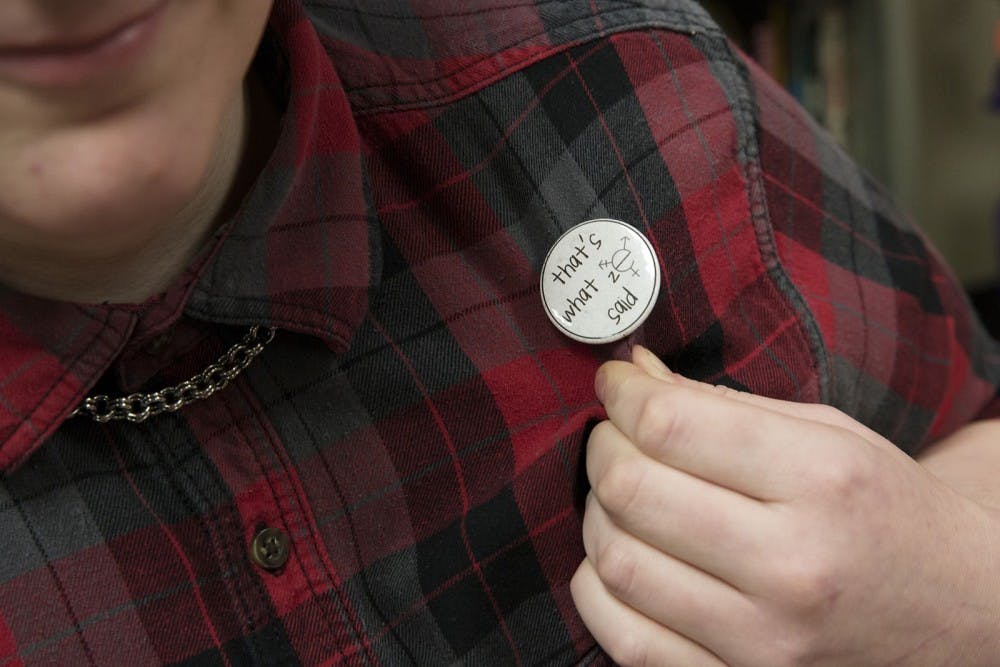Did ‘The Year of the Booty’ help change body image ideals?
Some say the past year in pop culture was filled with larger derrières and championing bodies of all sizes.
Although that may be true in certain circumstances, some at Ohio University think “The Year of the Booty” did not actually help change body image ideals as much as society thinks.
Mainstream media reported on body acceptance and positivity, which encourages conversations on the topic, but there’s still a long way to go, said Erin Fischer, an OU alumna who studied Women’s, Gender and Sexuality Studies and was a previous Post columnist.
“I think that the ideals are changing, but definitely not as fast as I’d like them to,” Fischer said. “We now value curves — but the right kind of curves. We still don’t value fat people who don’t have flat stomachs or cellulite.”
As far as pop culture and body image ideals go, Sarah Jenkins, program coordinator at OU’s LGBT and Women’s centers, was critical of some pop culture icons.
“I don’t think Nicki Minaj or Iggy Azalea count as women of size at all. They are both very thin, Nicki Minaj has a larger rear, but her stomach is completely flat,” Jenkins said.
There are also some problematic elements to body image anthems such as “All About That Bass” by Meghan Trainor, Jenkins said.
“It alienates thin women,” she said. “Body acceptance shouldn’t be about seeing one size as better than the other, it should be about valuing all people at all sizes. Putting thin women down does not lift fat women up.”
Songs like these, despite their flaws, still gather some support among those who think they push back at fat shaming.
“Speaking out against fat shaming is something I think has gathered steam in the past decade,” said Patty Stokes, a professor of Women’s, Gender and Sexuality Studies. “At the same time that goes on you have an intensifying in the shaming of people who are obese.”
Maintaining a healthy body has a lot to do with eating habits and genetics, said Deborah Murray, an associate lecturer of nutrition in the College of Health Sciences and Professions.
“A person with healthy body image would be accepting and have a sense of peace and acceptance of who they are and how their body performs,” Murray said. “A person that has a healthy image would not engage in excessive eating and would not engage in comparing themselves to the standard norm.”
While a fat acceptance movement seems to be on the rise in general society, many believe it has not yet hit OU’s campus.
“I’m not sure there is much of a movement here at Ohio University,” Jenkins said.
However, “fat acceptance” is part of the annual “Love Your Body Day” event in October.
Starting a movement would be difficult, said Jesper Beckholt, the education coordinator and librarian at the LGBT Center.
“I really would like to see a more pronounced fat acceptance movement here but I think it’s very hard because I think that if a specific group were to be made for that, I think they would get a lot of harassment,” Beckholt said.
Beckholt said lack of fat acceptance points to an even larger issue in today’s society.
“If you are someone who is considered not traditionally attractive you are less likely to get jobs,” Beckholt said. “People who are fat are perceived as less competent.”
A campus conversation on what beauty is, and what makes someone beautiful including those with visible disabilities and those who are gender non-conforming would be productive, Beckholt said.
But Stokes said any kind of cultural change is slow.
“I would be really surprised if in my lifetime we reached a point in cultural evolution where we see all bodies as equally attractive.”
@w_gibbs
wg868213@ohio.edu






